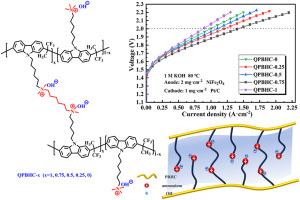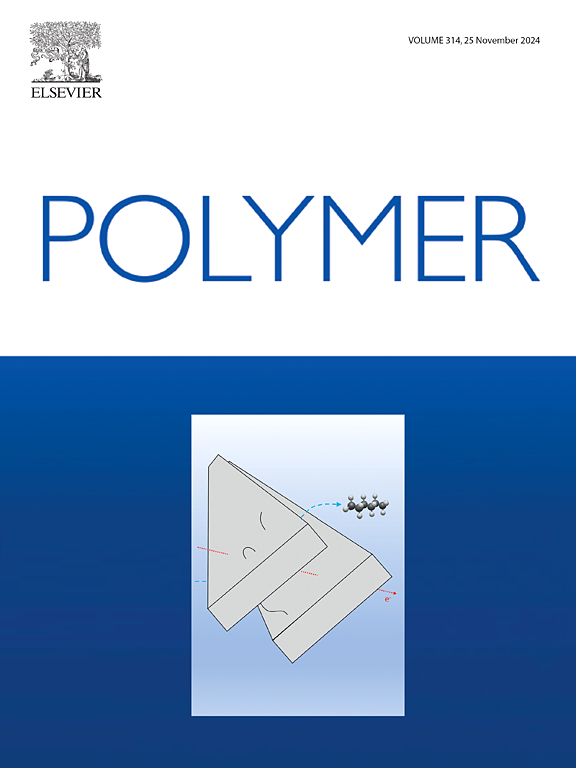Durable cross-linked poly(carbazole)-based anion exchange membranes for alkaline water electrolysis
IF 4.1
2区 化学
Q2 POLYMER SCIENCE
引用次数: 0
Abstract
Anion exchange membranes (AEMs) are crucial materials in hydrogen production techniques via water electrolysis. Whereas, the “trade-off” between the conductivity and dimensional stability of AEMs, as well as poor alkaline stability, hinders the advancement of AEMs and water electrolysis technologies. Cross-linking serves as a pivotal strategy for addressing the 'trade-off' effect, thereby facilitating the fabrication of highly conductive and durable AEMs. In this study, a series of poly(carbazole)-based AEMs, designated as QPBHC-x, were synthesized utilizing the flexible cross-linker N,N,N',N'-tetramethyl-1,6-hexanediamine (TMHDA). The synthesized AEMs demonstrated reduced water uptake and enhanced alkaline stability in comparison to uncross-linked AEMs, while maintaining a conductivity retention exceeding 92% after immersion in 1 M NaOH solution at 80°C for 720 hours. AFM and SAXS analyses revealed the microphase separation structure in the prepared AEMs, which construct continuous ion channels and promote ion conduction. Specifically, the QPBHC-0.5 demonstrated a conductivity of 102.3 mS·cm-1 at 80 °C and exhibited a tensile strength of 46.6 MPa. Furthermore, anion exchange membrane water electrolysis (AEMWE) single cell (cathode: Pt/C and anode: NiFe2O4) based on QPBHC-0.75 achieved a current density of 1.40 A·cm-1 at 2 V in 1 M KOH (80 °C). Meanwhile, QPBHC-0.5 maintained stable operation for over 470 hours at 1.0 A·cm-1 in 1 M KOH (80 °C) with a voltage decay rate of 352 μV·h-1. These results indicate promising applications of cross-linked poly(carbazole)-based AEMs in water electrolysis.

求助全文
约1分钟内获得全文
求助全文
来源期刊

Polymer
化学-高分子科学
CiteScore
7.90
自引率
8.70%
发文量
959
审稿时长
32 days
期刊介绍:
Polymer is an interdisciplinary journal dedicated to publishing innovative and significant advances in Polymer Physics, Chemistry and Technology. We welcome submissions on polymer hybrids, nanocomposites, characterisation and self-assembly. Polymer also publishes work on the technological application of polymers in energy and optoelectronics.
The main scope is covered but not limited to the following core areas:
Polymer Materials
Nanocomposites and hybrid nanomaterials
Polymer blends, films, fibres, networks and porous materials
Physical Characterization
Characterisation, modelling and simulation* of molecular and materials properties in bulk, solution, and thin films
Polymer Engineering
Advanced multiscale processing methods
Polymer Synthesis, Modification and Self-assembly
Including designer polymer architectures, mechanisms and kinetics, and supramolecular polymerization
Technological Applications
Polymers for energy generation and storage
Polymer membranes for separation technology
Polymers for opto- and microelectronics.
 求助内容:
求助内容: 应助结果提醒方式:
应助结果提醒方式:


